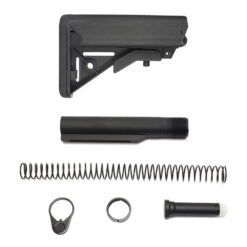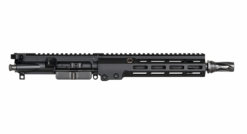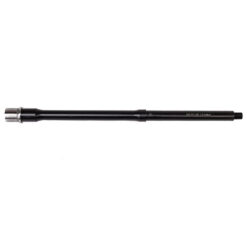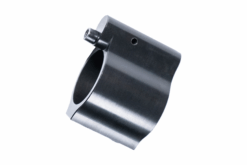AR-15 accessories, AR-15 Barrels, AR-15 Complete Uppers, AR-15 Parts
AB 1263: How California’s New Firearm Regulations Affect Gun Owners
Table of Contents
What California Gun Owners Need to Know First
California’s legislative landscape has changed again with the passage of AB 1263. This law tightens rules around unlawful firearm manufacture, digital distribution of manufacturing code, and industry liability—provisions that affect hobby builders, parts buyers, dealers, and anyone who modifies or assembles firearms in the state. If you own, build, or maintain AR-style rifles or other modern sporting guns, you need to understand how AB 1263 changes compliance obligations and what steps to take now to remain on the right side of the law.
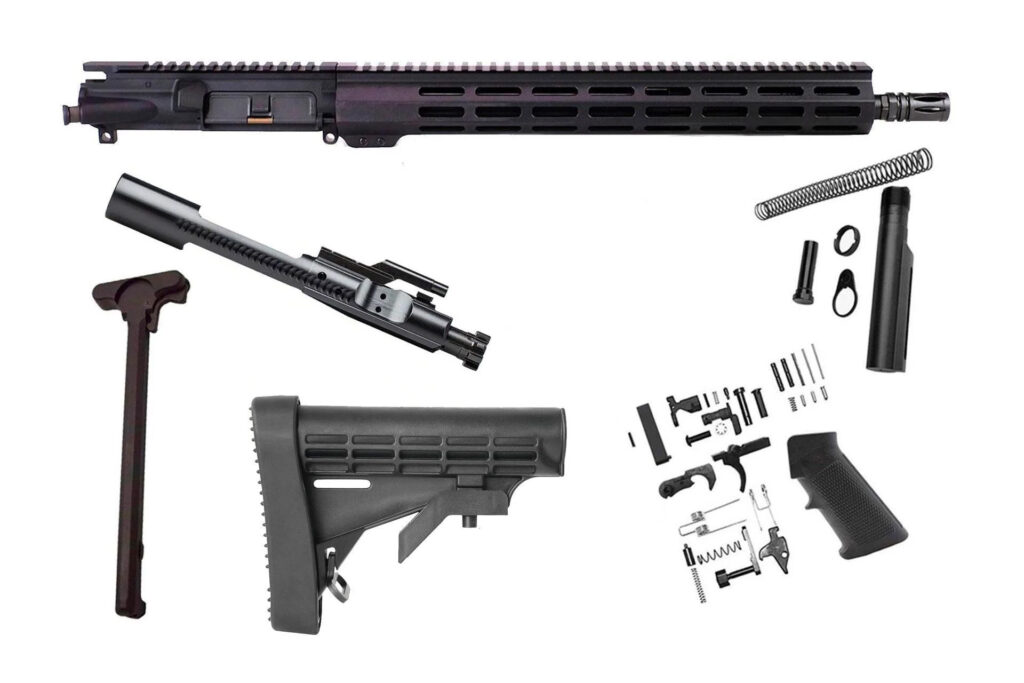
This post breaks down the core changes in plain language, explains practical next steps for California gun owners, and highlights how sourcing quality parts from a knowledgeable vendor can reduce risk and ensure you finish builds on time—before new enforcement routines and administrative rules take full effect. Throughout, I’ll reference key provisions without legalese and point out sensible actions every responsible owner can take.
What AB 1263 Does — The Big Picture
AB 1263 expands California’s authority to regulate the unlawful manufacture and distribution of firearm-related products by focusing on three core areas:
- Unlawful Manufacture: The law clarifies and broadens prohibitions against knowingly causing, aiding, or facilitating the illegal manufacture of firearms, including by using 3-D printers, CNC machines, or other digital manufacturing processes.
- Digital Manufacturing Code: AB 1263 addresses the distribution of digital files and instructions (CAD files, 3-D print files, software) used to manufacture firearm components. It creates a stronger rebuttable presumption that platforms or individuals who host or distribute such code may have facilitated unlawful manufacture.
- Industry Liability and Standards: The bill expands the Firearm Industry Responsibility framework, clarifying duties for industry members and increasing civil exposure for distributors, manufacturers, or online platforms that fail to prevent misuse of products or code.
These elements make it riskier for people who rely on unregulated fabrication methods, and they create more substantial incentives for vendors and platforms to restrict access to tools and materials that could facilitate unlicensed manufacture.
Who AB 1263 Affects — Not Just “Ghost Gun” Makers
It’s tempting to think AB 1263 targets only 3-D printer enthusiasts or people who make receivers at home. In reality, the bill’s reach is broader:
- Private builders who source parts, jigs, or files for hobby builds should pay attention—particularly if their workflow involves digital files, unserialized components, or manufacturing beyond a single part.
- Online platforms and hosting services that distribute CAD files or provide forums and marketplaces for such files face new presumptions of liability.
- Retailers and dealers selling specific tools, equipment, or parts must review their practices and ensure they don’t facilitate unlawful manufacture under the law.
- Hobbyists and collectors who modify or upgrade rifles need to confirm the compatibility and legal status of parts, particularly if those parts could convert a weapon into an unlawful configuration under California law.
The practical takeaway: if your activity touches manufacturing, digital instructions, or distribution in any way, take the time to verify you are operating within the law.
Key Practical Impacts for Builders and Owners
Below are clear, practical impacts AB 1263 introduces and how they translate into day-to-day decisions:
1. Greater Scrutiny of Digital Files and Sharing
Sharing or hosting digital files that enable the manufacturing of firearm components now carries a higher legal risk. If you trade CAD files, post jigs and tool paths, or download print files from public repositories, you should stop and assess the legal exposure. Maintain records of intent and usage, and avoid distributing files to third parties without a clear legal basis.
2. Changes to What Retailers Will Sell and How
Some vendors may restrict sales of specific tools or parts, require age and identity verification for accessory purchases, or add disclaimers and recordkeeping to comply with new standards. That can affect availability and shipping timelines for parts you often buy online. Planning reduces the chance you’ll face unexpected delays.
3. Increased Importance of Serialized, Compliant Parts
To minimize risk, prioritize components that are serialized, factory-produced, and supplied by established manufacturers with clear compliance practices. Using reputable, Mil-Spec or better AR-15 parts helps demonstrate responsible intent and reduces the legal risk associated with “home manufacturing” claims.
4. Civil Liability Signals for Industry Actors
The bill’s amendments enable civil suits when a firearm-related product reaches the market and contributes to unlawful use. For private sellers or small businesses, this risk may translate to stricter vendor policies and additional documentation requirements. Keep receipts, serial numbers, and correspondence for every parts transaction.
What California Gun Owners Should Do Right Now
You don’t need to panic, but taking sensible, responsible steps today will reduce stress tomorrow:
- Audit Current Projects and Files — Remove or secure any digital manufacturing files you don’t need. If you keep CAD files, store them offline with restricted access and document legitimate, lawful usage.
- Buy Critical, Compliant Parts Now — If you have an imminent build or gift plan, source serialized, factory-made components through a reputable supplier while inventory and shipping remain reliable. Consider ordering buffer kits, lower parts kits, bolt carrier groups, barrels, and complete uppers sooner rather than later.
- Keep Detailed Records — Save invoices, serial numbers, and communications for every purchase. Good documentation helps show lawful intent and traceability.
- Avoid Distributing Instructional Files — Don’t upload, host, or transmit manufacturing code or toolpaths. Sharing such files can create a presumption of facilitation under the new law.
- Seek Expert Advice for Commercial Activity — If you sell parts, designs, or services for compensation, consult an attorney or compliance specialist to understand your risk profile under AB 1263.
- Work With Reputable Vendors — Buy parts from businesses that understand California’s environment, maintain compliant inventory, and can advise on choices that keep your build legal.
Geissele Automatics Super Duty MOD1 AR-15 Complete Upper Receiver Carbine – Black – 14.5″
Geissele AutomaticsWhy Source Parts from a Knowledgeable Vendor (and What That Looks Like)
When a law changes, vendors that understand and adapt quickly bring real value. A knowledgeable supplier like Black Rifle Depot will:
- Maintain a stocked, compliant inventory of commonly used components, so builders can complete projects without chasing obscure parts.
- Provide clear product descriptions and compatibility guidance so buyers choose the correct parts for legal, feature-compliant builds.
- Offer reliable shipping and customer service during peak demand, reducing the risk of delayed holiday builds or projects timed to deadlines.
For these reasons, many California builders are choosing to work with established outlets that understand the state’s legal nuance and inventory pressures. A trusted vendor helps you avoid accidental noncompliance and gives practical help when selecting parts for featureless or otherwise lawful builds.
How AB 1263 Could Change the Market — What to Expect
Expect several market shifts as the law is implemented:
- Short-term demand spikes: Enthusiasts and professionals may accelerate purchases to avoid future restrictions or to lock in parts for builds. That can temporarily reduce stock and lengthen shipping timelines.
- Tighter vendor policies: Platforms may adopt stricter user verification and content moderation to avoid legal exposure tied to digital manufacturing files.
- More recordkeeping by sellers: Vendors may retain additional buyer information and add compliance checks, increasing purchase friction but improving traceability.
- Legal test cases: Over time, courts will interpret the new liability provisions, potentially altering how broadly the law applies in practice. Stay informed about developments.
Being proactive—buying needed parts early, documenting purchases, and avoiding distribution of manufacturing files—keeps you prepared for market and regulatory shifts.
Common Scenarios & Suggested Responses
- Scenario: You planned to mill your own lower receiver.
Suggested response: Pause and consult legal guidance. Consider buying a serialized lower or a completed lower assembly from a reputable vendor to avoid potential criminal or civil exposure. - Scenario: You host a forum that shares CAD files.
Suggested response: Remove download links and implement strict access controls. Review terms of service and consider consulting counsel to limit liability exposure. - Scenario: You run a small parts business selling handguards and BCGs online.
Suggested response: Implement clear documentation procedures for sales, maintain compliance policies, and verify that your product offerings do not encourage unlawful manufacture.
FAQs — Short Answers to Frequent Questions About AB1263
When does AB 1263 take effect?
The bill was chaptered in 2025, with implementation phases, administrative rules, and enforcement timelines expected to follow. AB 1263 officially takes effect on January 1, 2026.
Does the law ban all home builds?
No. Lawful builds that use serialized, compliant parts and follow California law remain legal. The law targets the unlawful manufacture and distribution of digital manufacturing instructions.
Am I allowed to keep CAD files for personal use?
Possessing files for strictly personal, lawful use is different from distributing them. However, retaining such files increases risk—store them securely and avoid sharing.
Will vendors stop shipping to California?
Some sellers may change policies, but many reputable vendors will adapt operations to comply with California law while continuing to serve customers. Expect some adjustments.
How can I show I acted lawfully if questioned?
Keep receipts, serial numbers, and relevant communications. Purchase from reputable vendors and document the build steps. Good records help demonstrate lawful intent.
Final Recommendations — Practical Steps to Stay Ahead
- Purchase essential, compliant parts now if you have an upcoming build or holiday project. Inventory and shipping may tighten as regulations roll out.
- Use reputable suppliers that understand California law and can advise on compliant choices. This reduces the risk of accidental noncompliance and saves time when selecting parts.
- Avoid distributing manufacturing code and secure any CAD files you possess. Sharing such files can expose you to legal liability.
- Document everything—invoices, serial numbers, and communications create a compliance paper trail that matters.
- Consult professionals if you sell or manufacture—commercial actors should obtain legal advice to ensure operations meet AB 1263’s expanded duties.
Prepare, Buy Responsibly, and Build Smart
AB 1263 introduces meaningful changes that affect how California gun owners, builders, and vendors operate—especially at the intersection of digital manufacturing and industry liability. The law tightens the rules around unlawful manufacture, addresses the online distribution of manufacturing code, and raises the stakes for industry participants.
If you plan to build, upgrade, or complete a project in the coming months, take reasonable steps now: secure compliant parts from reputable suppliers, avoid distributing manufacturing files, document your purchases, and consult counsel if you operate commercially. Working with knowledgeable vendors makes a practical difference. They can help you choose compliant components, provide timely shipping, and support your build decisions during this transition.
Stay informed. Act deliberately. Build and buy with responsibility—so you and your fellow Californians can continue to enjoy shooting and gunsmithing while respecting the rule of law.
For additional resources, follow our FACEBOOK PAGE.




